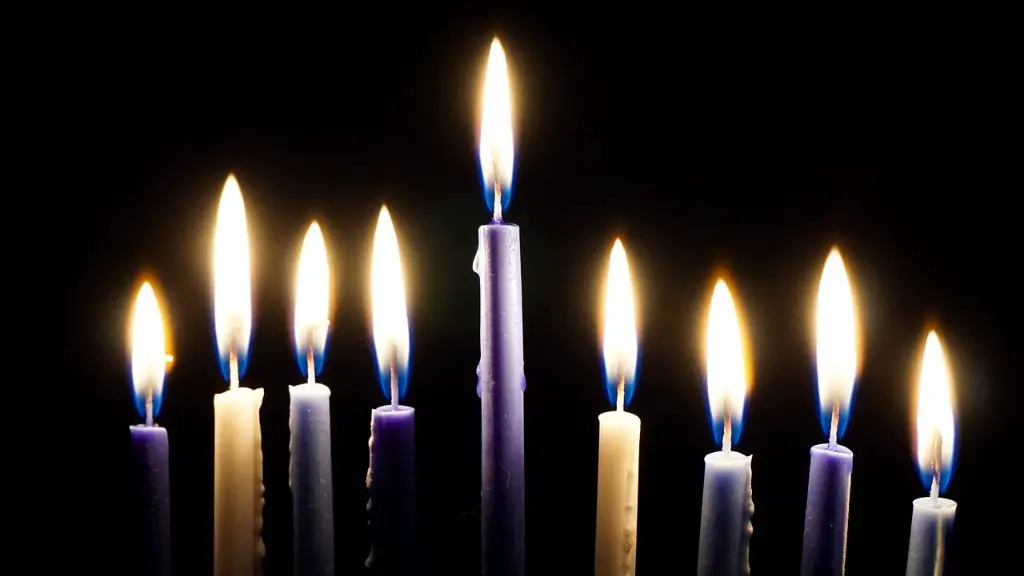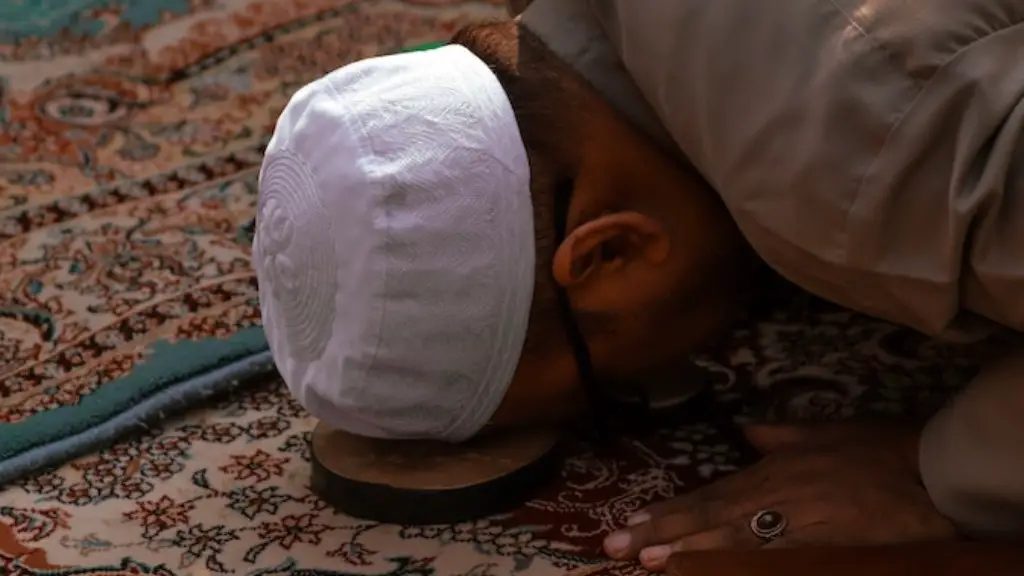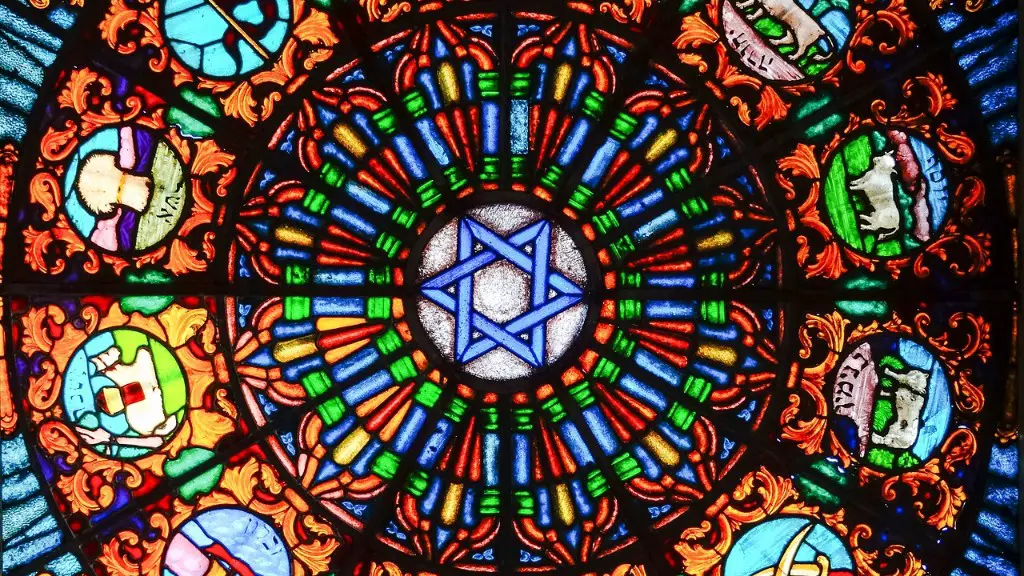The Divine Mother in Hinduism is referred to as numerous names, including Uma, Parvati, Lakshmi, Kali, Durga and many others. She is often seen as the embodiment of Shakti or divine energy, representing the creative and active power that is responsible for the generation, maintenance and destruction of all life in the universe. The Divine Mother is central to Hindu mythology, symbolism, art and literature, and she is revered for her strength, wisdom and beauty.
The divine energy of the Divine Mother is known as shakti in Hinduism and it is said to be the source of all knowledge and power. She is seen as the source of creation and is often symbolized as the Mother Goddess, emanating divine energy and possessing both masculine and feminine qualities. She is believed to possess the skill and expertise to create, maintain and destroy any kind of existence and is often portrayed as a destroyer of evil and a protector of the righteous.
In Hindu mythology the Divine Mother is often seen as having a trinity of forms. One is known as Mahalakshmi who is associated with wealth and prosperity, another is known as Mahakali who is associated with destruction and death, and finally Mahasaraswathi who is associated with knowledge, wisdom and learning. Each of these three forms has different attributes and qualities that are associated with her.
The stories of the Divine Mother that are found in Hindu mythology are often used to teach spiritual lessons and often reflect cultural values such as truth, justice, and patience. She is often depicted as the protector of Dharma, which is the divine law that guides the cosmic order of life in the universe. In some stories, she is also depicted as being responsible for the destruction of evil and wickedness.
The Divine Mother has a significant role in the worship of Hinduism. She is often seen as a symbol of strength and protection, and many devotees make offerings to her as part of their devotional practice. Her goddess forms are venerated in temples and shrines, where she is seen as the embodiment of divine power and love.
The Divine Mother is an important part of the Hindu culture, and she is revered for her strength and power as well as her beauty and compassion. She is seen as a source of strength and protection, and her importance in Hindu mythology and worship is evident in her many forms and stories.
The Goddess Of Love And Beauty – Lakshmi
Lakshmi is known as the goddess of wealth, beauty, love and prosperity. She is believed to have arrived on the surface of the earth in the form of a beautiful lotus and is associated with the flowering of nature and the nurturing of life. Her beauty is said to be so captivating that it attracts gods and humans alike and her nature is compassionate, gentle and kind.
In Hinduism, Lakshmi is seen as an embodiment of divine energy and is a representation of the feminine aspect of the divine. She is seen as an embodiment of the divine feminine and the supreme mother, and her role is to protect the world from evil and to bring about prosperity, health and happiness to all. She is also seen as a symbol of abundance and fertility, and is often associated with wealth and good fortune.
In addition to being venerated as the goddess of wealth and love, Lakshmi is also seen as a symbol of spiritual enlightenment. She is said to bring enlightenment and insight to those who seek them and to help them become more spiritual and aware of the divine within them. Her presence is said to bring clarity and balance to those in her presence.
The worship of Lakshmi is an important part of Hinduism and many devotees make offerings to her as part of their devotional practice. Her shrines and temples are often beautiful and are decorated with images of her beauty and grace. People often offer her flowers, incense, fruits and other objects to seek her blessings and to bring prosperity into their lives.
The Goddess Of Strength And Protection – Durga
Durga is a powerful warrior goddess and a strong protector of the righteous. She is seen as a representation of divine strength and power and is seen as a symbol of female power and protection. She is believed to have created an army of divine forces to protect the world from evil and is said to be the one who grants divine protection and power to those in need.
In Hindu mythology, Durga is often portrayed as a powerful goddess who is able to protect and preserve cosmic order in the universe. She is said to posses great strength and courage, and her many forms are often seen as embodiments of divine power. She is said to be able to bring about justice and order, and is seen as a symbol of protection for the righteous.
The worship of Durga is popular in Hinduism, and her shrines and temples are often visited by believers seeking her protection and blessings. Her images are seen as symbols of strength and courage, and many devotees offer prayers and offerings to her in the hopes that she will protect and bless them. Her symbols such as her weapon and her mount, the lion, are also seen as symbols of strength and power.
The worship of Durga is believed to bring strength and courage to those who seek it, as well as protection against evil. She is seen as a symbol of divine power and protection and is revered for her strength and courage in protecting the righteous.
The Goddess Of Destruction – Kali
Kali is known as the goddess of destruction and death and is often seen as a dark, fearsome figure. She is seen as a representation of the forces of destruction in the world, and her destructive powers are said to be necessary for the transformation and renewal of all existence. She is often seen as a symbol of death and destruction, but she is also seen as a representation of the power of transformation and renewal.
Kali is often depicted as a dark terrifying figure and it is said that her fierce appearance is necessary to protect all that she loves. She is said to be capable of destroying evil and wickedness with her fierce gaze and has the power to grant liberation to those who seek it. Her fierce strength and power are often seen as a symbol of the power of transformation and renewal, and her symbolism is often used to teach spiritual lessons.
The worship of Kali is an important part of Hinduism and many devotees make offerings to her as part of their devotional practice. Her temples and shrines are often adorned with symbols of her power and her various weapons. Her images are venerated and celebrated, and many devotees seek her blessings and protection and offer prayers and offerings to her in the hopes of gaining spiritual liberation.
The Goddess Of Knowledge And Learning – Saraswati
Saraswati is known as the goddess of knowledge and learning and is seen as a symbol of wisdom and knowledge. She is often depicted as a beautiful and graceful figure, wearing white clothing and playing a veena, a stringed instrument. Her imagery is often used to represent the pursuit of knowledge, wisdom and insightfulness, and she is seen as the embodiment of divine knowledge and understanding.
In Hinduism, Saraswati is seen as the goddess of knowledge and learning and her presence is said to be necessary for spiritual progress. She is venerated as a symbol of knowledge, understanding, insight and creativity and it is believed that those who seek her blessings will be granted insight and knowledge. Her images are often seen in schools, libraries and educational institutions, as her presence is said to be essential for the pursuit of knowledge and learning.
The worship of Saraswati is an important part of the Hindu devotional practice, and many devotees make offerings to her as part of their devotional practice. Her shrines and temples often beautiful and are adorned with symbols of knowledge and learning, such as books and arts. Her images are venerated, and many devotees offer prayers and offerings to her in the hopes of gaining knowledge and wisdom.
The Goddess Of Creation – Parvati
Parvati is known as the goddess of creation and is seen as a representation of the feminine aspect of the divine. She is believed to be the one who gave birth to the gods and goddesses, and her presence is said to be necessary for the sustenance and protection of all life in the universe. She is often depicted as a beautiful and gentle goddess, and her presence is said to bring about peace, harmony and love.
In Hinduism, Parvati is seen as the embodiment of divine energy and is said to be the one who creates, protects and nurtures all forms of life in the universe. She is seen as a symbol of fertility, fertility and maternal love, and is often venerated as the mother goddess and the source of all creation. Her imagery is often used to teach spiritual lessons about the cycle of life, death and rebirth, and her presence is seen as a symbol of peace and harmony.
The worship of Parvati is an important part of Hinduism and her shrines and temples are often visited by devotees seeking her protection and blessings. Her images are often seen in homes, temples and public places, and many devotees make offerings to her as part of their devotional practice. Her presence is said to bring peace and harmony, and her images are often used to represent the power of creation.


